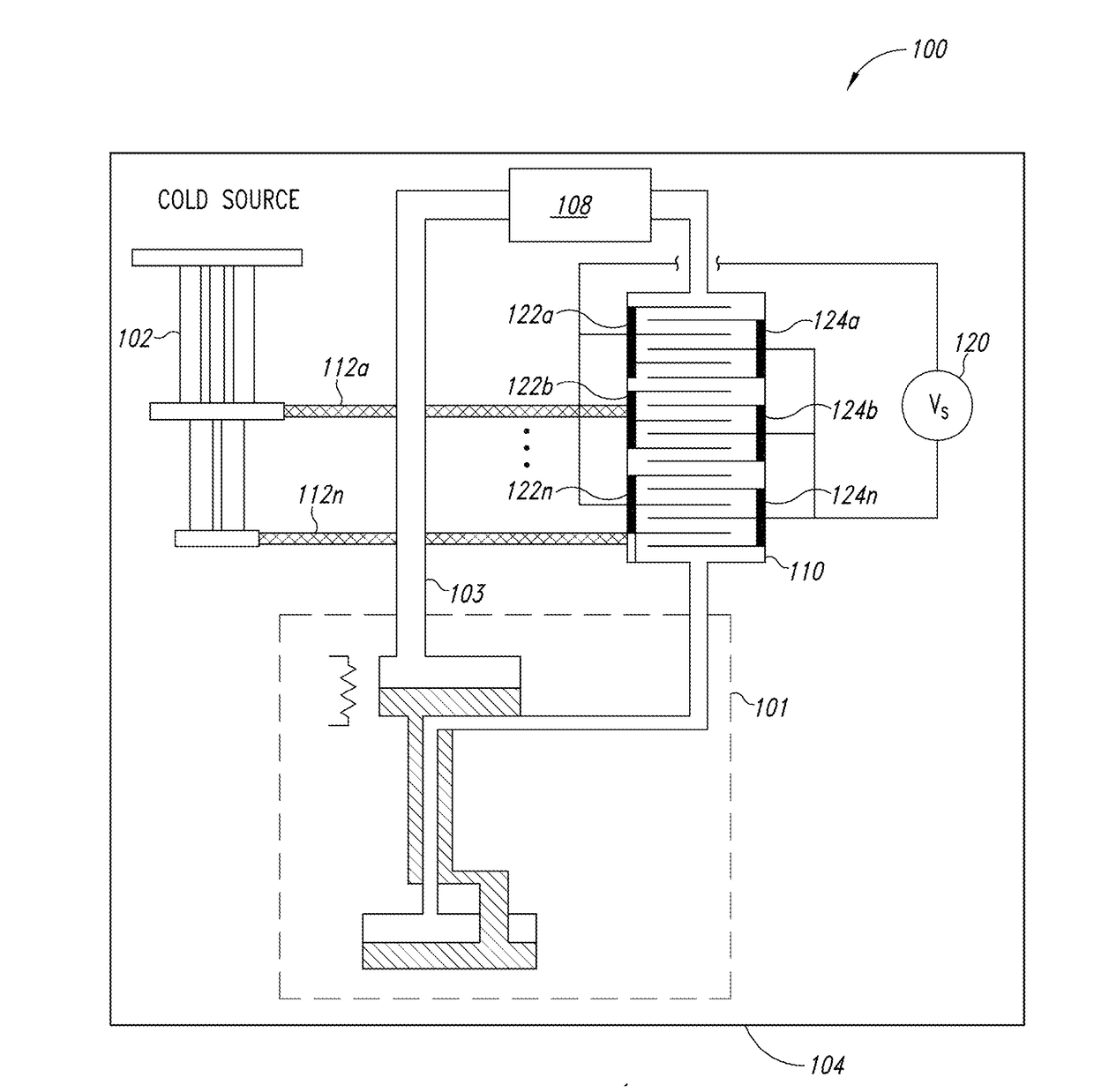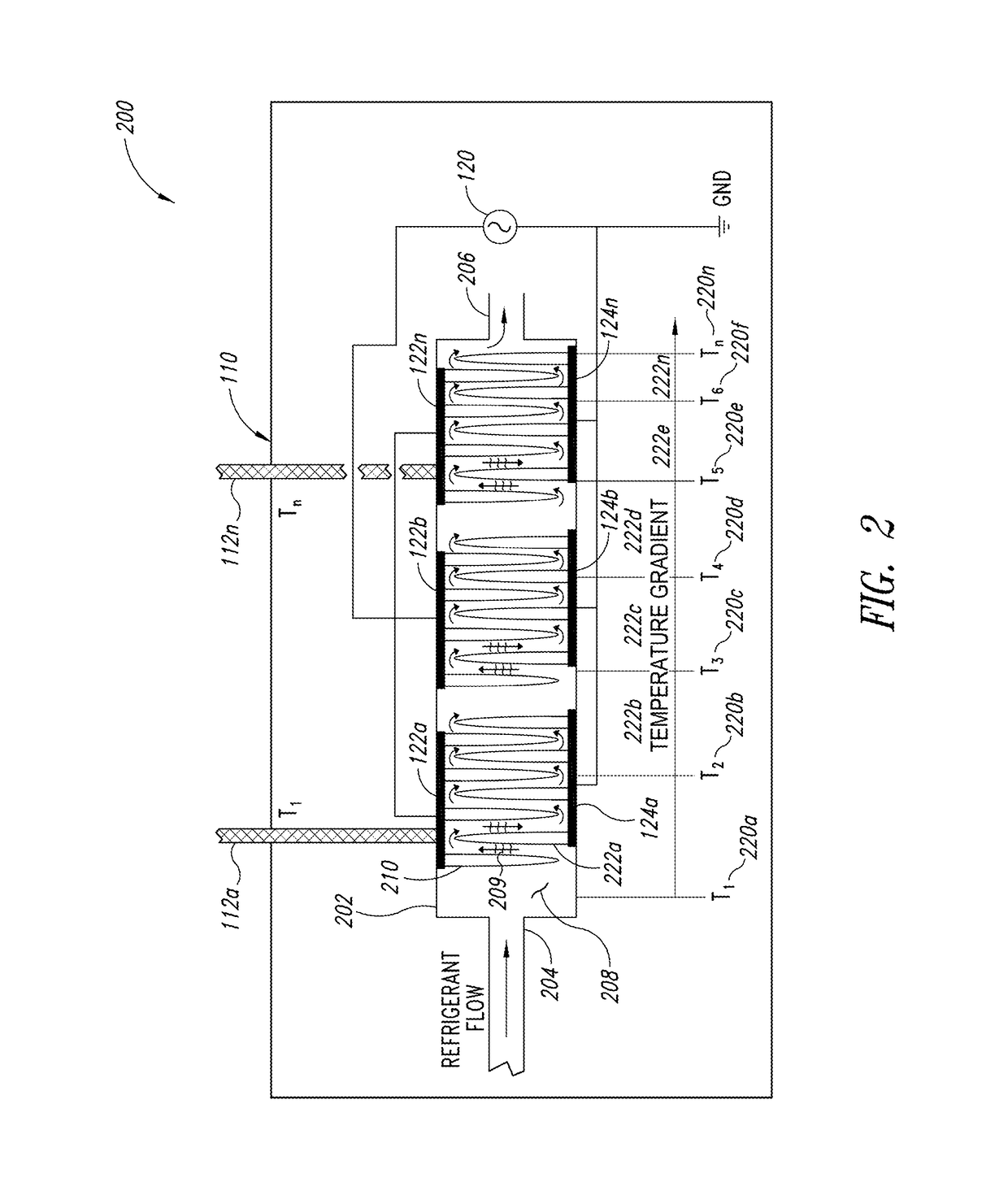Systems and methods for electrostatic trapping of contaminants in cryogenic refrigeration systems
a technology of electrostatic trapping and cryogenic refrigeration, which is applied in the direction of refrigeration components, refrigeration machines, light and heating apparatus, etc., can solve the problems of increasing contaminants, increasing the surface area available for bonding, and increasing the contaminant removal efficiency of the trap. , to achieve the effect of increasing the surface area available for bonding, and improving the contaminant removal efficiency of the trap
- Summary
- Abstract
- Description
- Claims
- Application Information
AI Technical Summary
Benefits of technology
Problems solved by technology
Method used
Image
Examples
Embodiment Construction
[0022]In the following description, some specific details are included to provide a thorough understanding of various disclosed embodiments. One skilled in the relevant art, however, will recognize that embodiments may be practiced without one or more of these specific details, or with other methods, components, materials, etc. In other instances, well-known structures associated with refrigeration systems, such as heat exchangers, impedances, and control systems including microprocessors, heat switches, drive circuitry and nontransitory computer- or processor-readable media such as nonvolatile memory for instance read only memory (ROM), electronically erasable programmable ROM (EEPROM) or FLASH memory, etc., or volatile memory for instance static or dynamic random access memory (ROM) have not been shown or described in detail to avoid unnecessarily obscuring descriptions of the embodiments of the present systems and methods.
[0023]Unless the context requires otherwise, throughout th...
PUM
 Login to View More
Login to View More Abstract
Description
Claims
Application Information
 Login to View More
Login to View More - R&D
- Intellectual Property
- Life Sciences
- Materials
- Tech Scout
- Unparalleled Data Quality
- Higher Quality Content
- 60% Fewer Hallucinations
Browse by: Latest US Patents, China's latest patents, Technical Efficacy Thesaurus, Application Domain, Technology Topic, Popular Technical Reports.
© 2025 PatSnap. All rights reserved.Legal|Privacy policy|Modern Slavery Act Transparency Statement|Sitemap|About US| Contact US: help@patsnap.com



